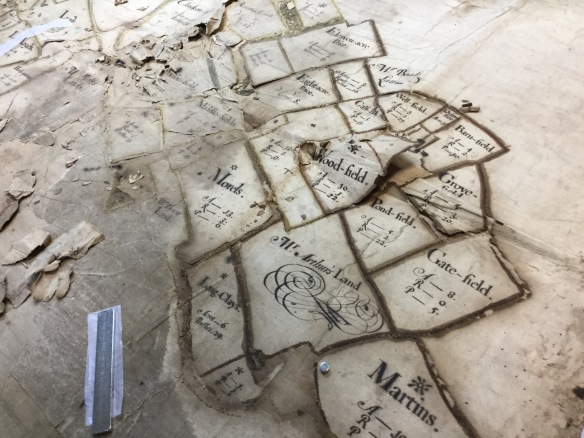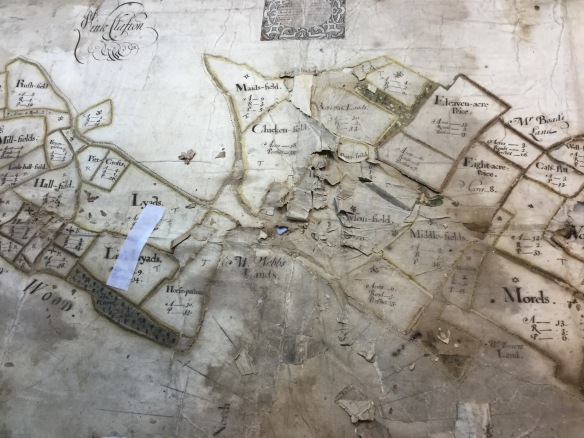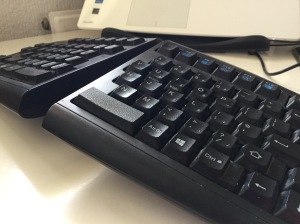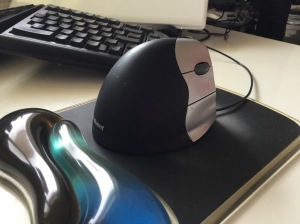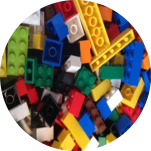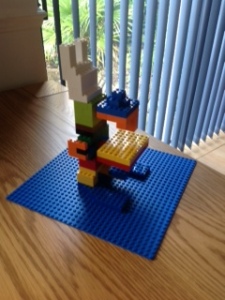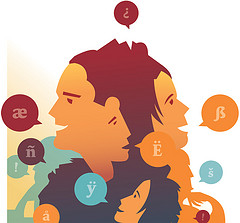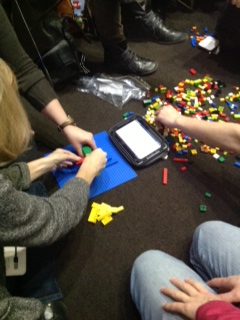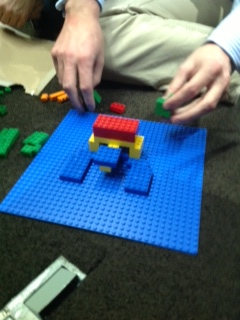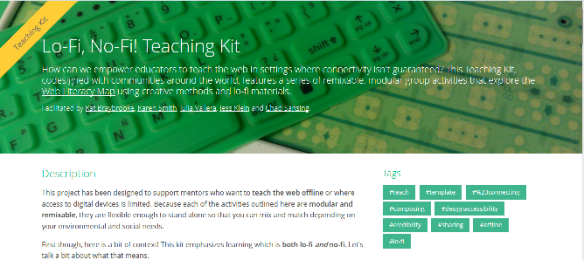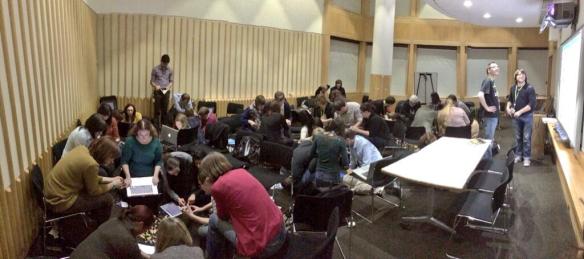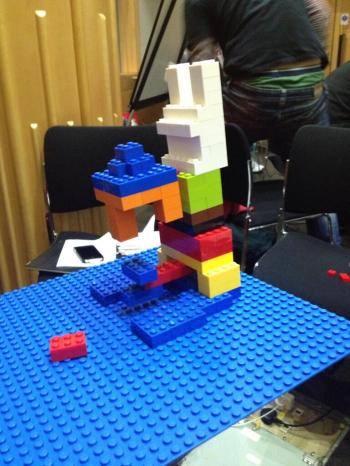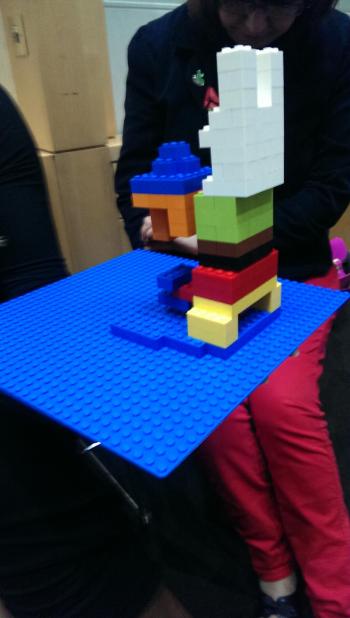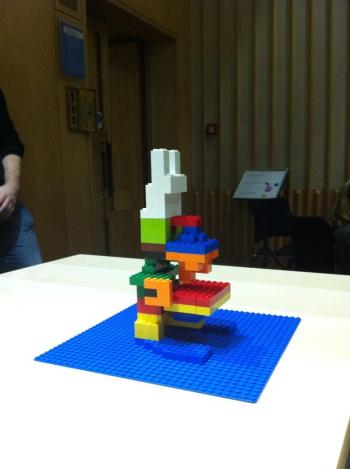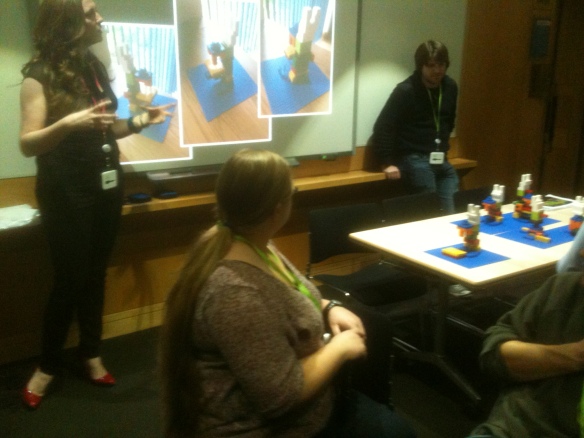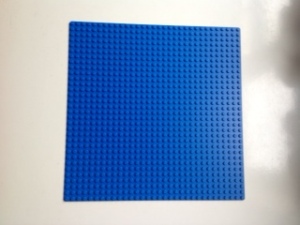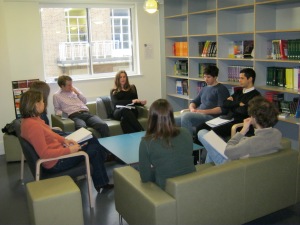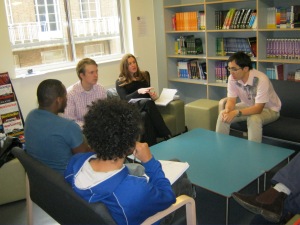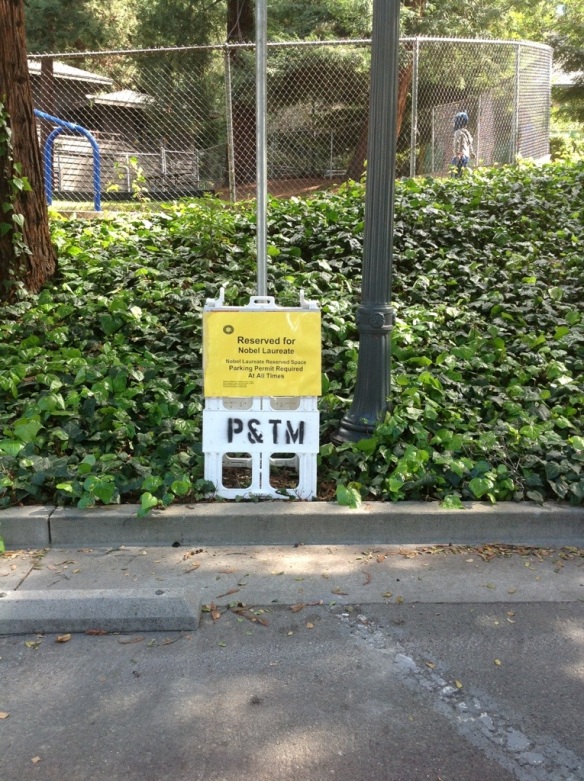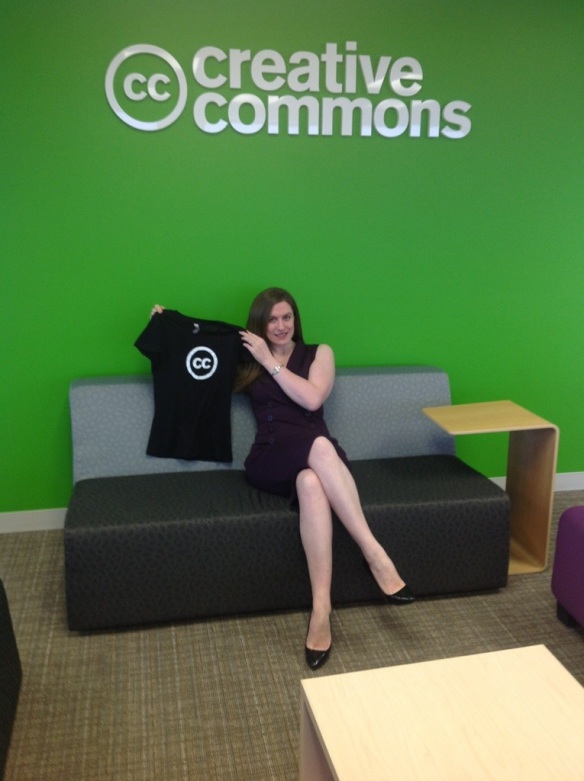It’s Explore Your Archive Week this week (18-26 November 2017) across the UK and Ireland, so I’m encouraging you all to get out to your local archives – or even larger regional or national ones – meet the people who work there, and learn more about the incredible work they’re doing to preserve our collective cultural heritage.
And it’s not just about preservation. Archives are a major keystone in enabling us all to explore this information and making it available for us to learn from, whether that’s in hard-copy or digitised forms. What really brings the archives alive is being able to go and access that information, those artefacts and pieces of history, learn from them and build on that knowledge thereafter: this is where you come in.
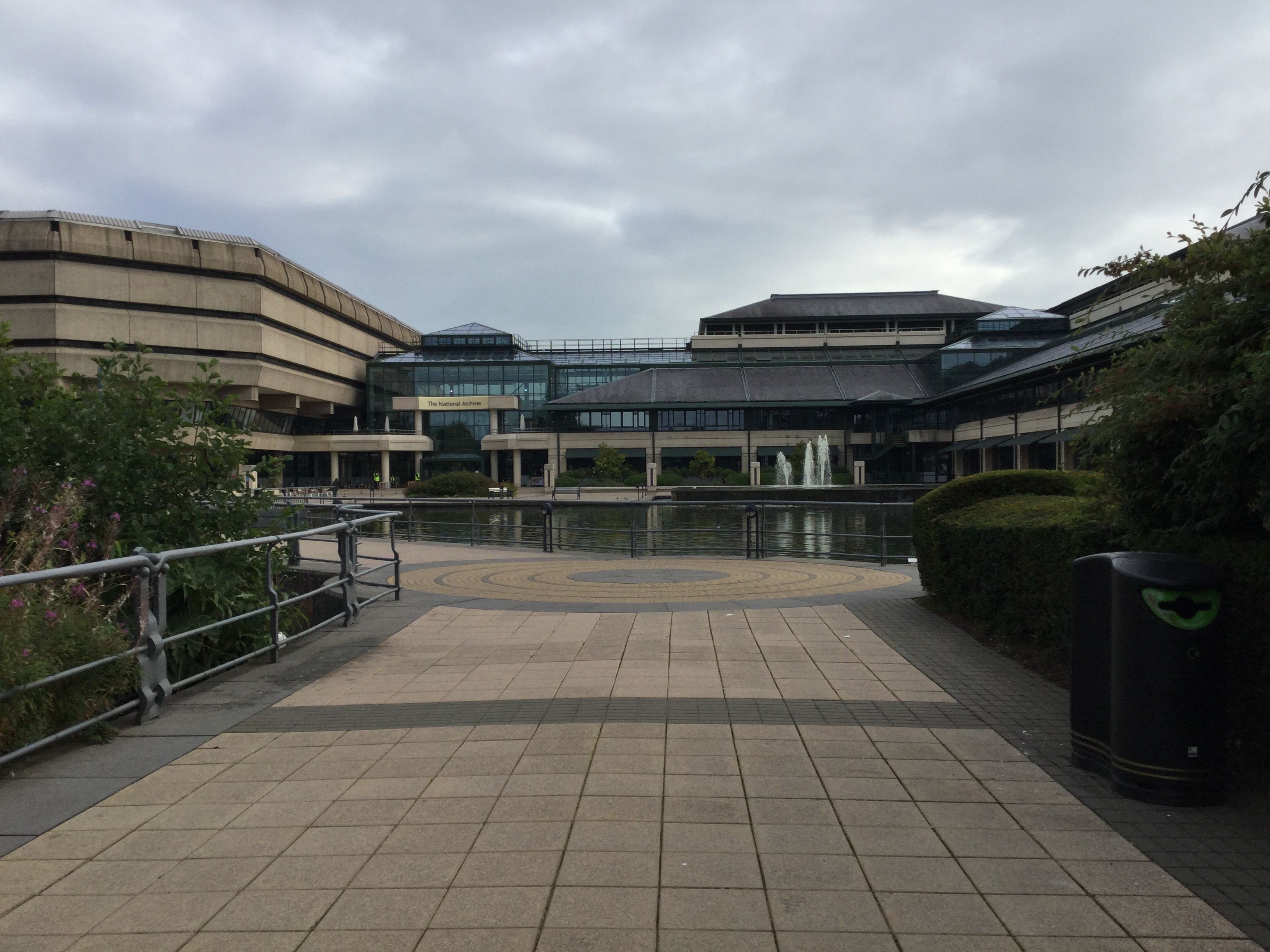
Front entrance to the UK National Archives, Kew, London.
So why’s #EYA Week for me?
We’re all seeing how rapidly the digital landscape is changing. Our increasingly interconnected world is making it ever easier to get the information we want at the touch of a button. Unfortunately though, that also makes it remarkably easy to sit at home on our computers and only interface with the digitised aspects of whatever we’re trying to learn about, when in fact that’s only one part of the story.
- Slow and steady: For the interested amateur genealogist, immersing yourself in your local archives at the right point in your research will help you become a more balanced researcher in learning to work with primary sources. It forces you to adopt a slower pace of working, making you think more critically about your methodology and about the material in front of you.
- Make use of archivists’ knowledge: As I mentioned earlier, online access to digitised content is only one aspect of archival work. Archives are a positive Aladdin’s Cave of wonders, and the staff who work there are usually hugely knowledgable about their collections. Draw on their advice and expertise – it will benefit you and your work.
- Appreciate your resources: One gripe amongst many new genealogists is the cost of accessing online archives. What they don’t see is the immense amount of work that goes into producing these and maintaining them over time. Getting to see some of this in person helps one comprehend all the processes that contribute to those services, and why they’re worthy of our funding.
- Interdisciplinary work: If, like me, you’re a scientist, you’ll be familiar with how interdisciplinary working is a major to-do nowadays. The preservation aspects of archival work are excellent examples of how science, arts and the humanities can benefit one another – you’ll hear more about this below in the Collection Care part of Open House.
So this week I want to inspire you to get out to your local archive, meet the archivists there (they’re really knowledgeable) and find out more about what’s happening: here’s my experience of seeing behind the scenes at the National Archives earlier this year.
Off to the National Archives
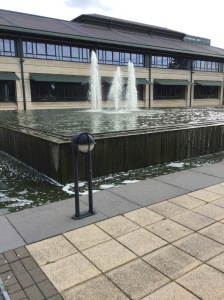 8am and I’m out of the house on a cold September morning and heading to the train station. Destination: the UK’s National Archives at Kew, where it’s Open House day and I’m going to get to see behind the scenes at the workings of this wonderful building.
8am and I’m out of the house on a cold September morning and heading to the train station. Destination: the UK’s National Archives at Kew, where it’s Open House day and I’m going to get to see behind the scenes at the workings of this wonderful building.
The National Archives (TNA for short) is tucked away amidst residential properties in Kew, south-west London, just a short walk from Kew Gardens station. Walking through rows of houses en route from the station, there’s no mistaking it once the Brutalist masterpiece looms large in front of you.
On arrival, I collect my (free and pre-booked) tickets for the various things I’ve signed up to, and then there’s just time for a quick coffee in TNA’s cafe before the day gets underway.
How are items restored?
First stop of the day: the Collection Care laboratory, which identifies resources in need of repair and restores items where necessary, ensuring the long-term preservation of TNA’s collection. 2017 marks the first time that they’ve opened this up to the public for an Open House session. If anyone from TNA is reading this: please, please make this a permanent feature of the day in future – it was a fantastic experience and to be honest I could have stayed here for hours and hours. The fact that I was booked on a repository tour at 11:30 was the only reason I (reluctantly) left once my 40 minutes were up…
Collection Care had organised a series of stations to showcase some of the projects they’re working on. Key challenges for this department are finding out why particular items degrade, and then utilising existing techniques, or developing new ones, to effect the necessary repairs. Predictive assessment forms a key part of their conservation work; if frequently-used items can be identified from user stats, it’s possible to take a “prevention is better than cure” approach and either reinforce items before they’re damaged, or find alternative ways of allowing users to access information from artefacts – including by providing 3D printed replicas where appropriate.
Iron gall ink and map restoration
Restoring an 18th century land map is a considerable task, particularly when it’s one that has degraded as much as the one at the centre of Sonja Scholl’s work in Collection Care. Originally drawn during a family land dispute, the map has sustained a lot of damage as it has aged.
So: what is the cause of the damage? Investigation into the pigments used indicated oak gall ink, made using oak tree galls mixed with iron (II) sulphate; this has degraded over time and caused damage where it was applied to the paper.
The map itself is made from paper on linen, and further problems have resulted from copies of the map being taken. Closer inspection reveals perforations along all the land boundaries: this is from an 18th century copy being taken by using a sharp implement to poke through the map and leave indentations on a second piece of paper which would have been placed underneath.
Smoke sponges are used for cleaning dirt from the map’s surface; then some replica oak gall ink is made from scratch and used to identify suitable substances for use in conserving the map.
Caring for the most popular items
I also had the chance to see some 15th century manuscripts being restored, including some stunning illuminated scripts and a volume detailing Elizabeth I’s response to Parliament on the subject of marriage – the latter, interestingly, in English.
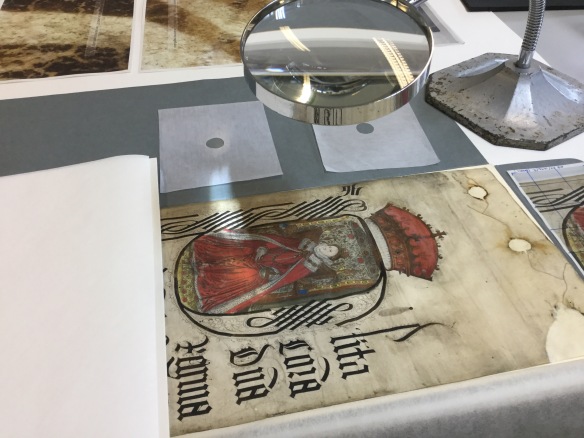
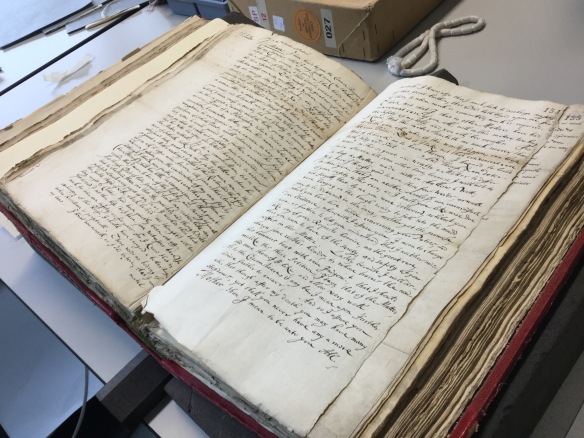
Elizabeth I’s response to Parliament on the subject of marriage (1)
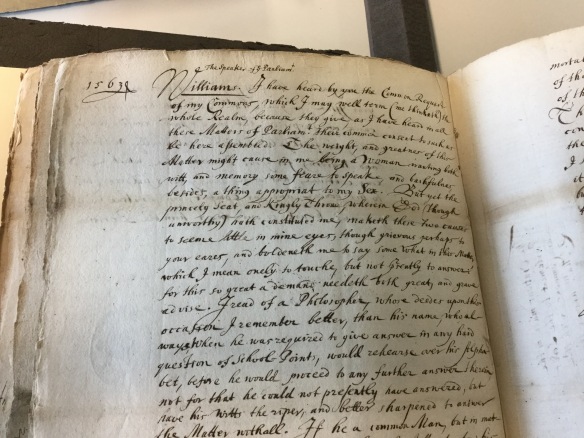
Elizabeth I’s response to Parliament on the subject of marriage (2)
When we think about archival preservation, working with parchment, vellum or paper often comes to mind. However, there are plenty of other items which don’t fit into this category. One such is a wooden tally stick collection from the Exchequer, shown to me by Helen Mayor, who cares for the high-demand items in TNA.
For items such as the tally sticks, identifying the most suitable kind of storage can be a major task in itself; the irregularly-shaped sticks call for bespoke packaging. When designing containers for items, the staff at TNA have to consider not only the safety of the artefact when it’s in archival storage over time, but how this storage is likely to be affected when items need to be moved or called up. Storage solutions have to take this into account to ensure that items won’t sustain damage at any point in the storage-use-return pipeline.
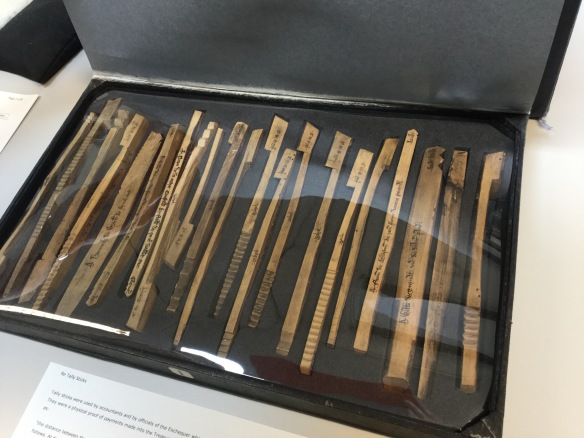
A collection of tally sticks from the Exchequer, in protective foam casing.
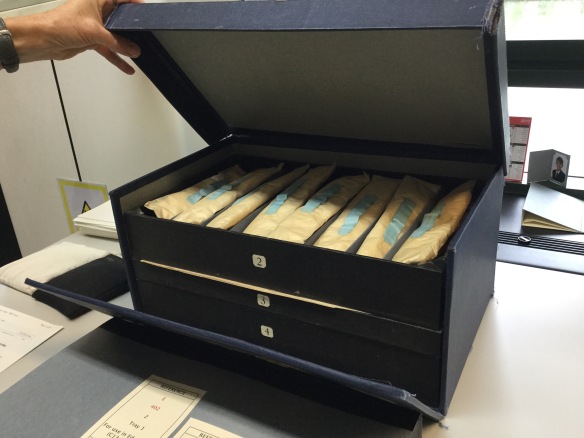
Additional tally stick storage in layered boxes.
Other Collection Care projects
Map restoration and care of the most-used items are only two of the many areas that the Collection Care team are working on: alas, far too much to mention here. Later in the day, Jacqueline Moon provided an excellent lecture on the work of CC, which was great for those who hadn’t manage to bag a place on the CC tours.
Other projects include from 3D-printing replica versions of wax seals for general use, thereby protecting the originals from damage. They also make their own wax on-site, approximating ancient wax recipes to gain testing samples which are used to predict how particular seals might degrade over time. Apparently the 3D printer also comes in useful for making bespoke storage cases for some objects. For me, Collection Care was a fabulous fusion of science and art: few places can offer beautiful manuscripts and old artefacts alongside a 3D printer, X-ray crystallography machines and the like.
Some restoration work even involves using a single-hair paintbrush to restore cracks in gouache paintings by the war artist Terence Cuneo, a painstaking labour! And the team working on digital conservation is a six-person outfit with responsibility for thousands of documents. The scale of operations at TNA is breathtaking when you see it in person.
On foot through the repositories…
Next came the repository tour. TNA has around 180km of record storage on-site: obviously we weren’t going to be walking around it all, but the hour-long tour we were given provided a fascinating insight into how the building operates. Due to security concerns, photographs aren’t permitted during this part of the day, so you’ll just have to rely on my words for this until you go on the tour yourself!
First we were taken up to one of the many rooms which deal with the stack requests. Over ten million records have been called up at TNA since the late 1990s. That’s an impressive amount; although the majority are stored on-site at Kew, around 6% of TNA’s collection is held in specially-adapted salt mines up in Cheshire (typically these are rarely-used records, or those which have already been digitised). Given the sheer scale of the collection, it’s impressive that most requests for on-site material are fulfilled within 90 minutes, and even items from the Cheshire material can be retrieved within days: testament to both the structuring and management of the retrieval process and the individuals who make it all happen.
We were then led through into the repository rooms. One of the first things you notice is that it can get a bit chilly at times. That’s all because of the strict temperature controls throughout the repositories, which are maintained at 16-18°C and around 50% humidity, which is optimal for the documents – if you’re eagle-eyed, you see little temperature and humidity gauges stationed all over the place during your tour. Rolling racking – huge shelving units that can be moved along using either a cranking handle or a motorised system – increase the storage space by around 30-40%, which comes in handy when you’re storing documents on the scale of TNA.
What surprised me was the sheer size of some of the items. The largest we encountered on our tour was an enormous box around 10-11 feet long, containing a huge map of Prince Edward Island in Canada. Apparently this item is so large it doesn’t even fit in the lifts easily, so moving it around presents something of a challenge.
If you’re thinking of coming to TNA to do some research at some point, then it’s well worth making the repository tour a feature of your Open House visit. It will give you a renewed appreciation for what’s going on behind the scenes to make your research possible.
Open House at TNA
You can tell from this blogpost that I had a fantastic day at TNA and would highly recommend the Open House day. Open House is an annual event and is completely free, although paid behind-the-scenes tours are available at other dates throughout the year (these won’t necessarily include the events I’ve discussed though), which I think often sell out, so watch out for those.
If you’re new to TNA and attend your first Open House, then I’d also recommend joining in with the quizzes they hand out on the day, asking you to spot different things around the building and grounds (which include a tranquil garden too). These trails are a fantastic way to get your bearings in the building and gain a quick overview of the range of facilities. The on-site bookshop is also very well stocked, including a good selection of Alan Godfrey OS maps, “My Ancestor” titles and all manner of books on genealogy, family history and general history.
My next visit? Hopefully soon, to view some items from J77 – an ancestor’s divorce court file from 1889. Looking forward to it already!
Thinking of visiting TNA?
If you haven’t visited TNA before, then the main take-homes from me are:
- Think before you bring. Coats, bags, pens and food are prohibited in most sections of the building and have to be left in the ground-floor lockers. So travel light when you visit TNA and avoid bringing too many valuables. It’s worth checking the “visit us” section of TNA’s website first in case you’re unsure of what’s allowed.
- Wear layers. Understandably for a major archive, temperature and humidity have to be rigorously controlled within the site, so the air con might have you shivering sometimes…best to dress with this in mind and bring a jumper or cardigan with you.
- Be quick with online booking for Open House, or arrive early on the day. Some Open House tickets get released online (sign up to the TNA newsletter from their homepage and you’ll get good notice of booking) but they go really quickly – I thought I was being prompt this year but most of the repository tours had already booked up over a month ahead of the event. However each element of the programme is run several times during the day, and some tickets are held for in-person bookings on the day. So arrive by 9:15am and you can be one of the first in line for the morning tickets when they’re released.
- TNA is very mobility-friendly. I had to contact TNA’s team in advance of Open House to ask about mobility-impaired access; I found their response friendly and helpful. The building itself is very well set up if you’re mobility impaired: lift placement is generally good, ramp or lift access was provided to all parts of the building which I saw, and there is also a wide range of heights of chairs in different areas of the building – if you’re dealing with a more subtle mobility impairment, this is an absolute godsend, as there’s bound to be seating somewhere to suit you.
Hopefully you’ll be joining the throngs for TNA’s Open House 2018. Until then though, get out to your local archives this week and explore – make the most of what’s out there!

